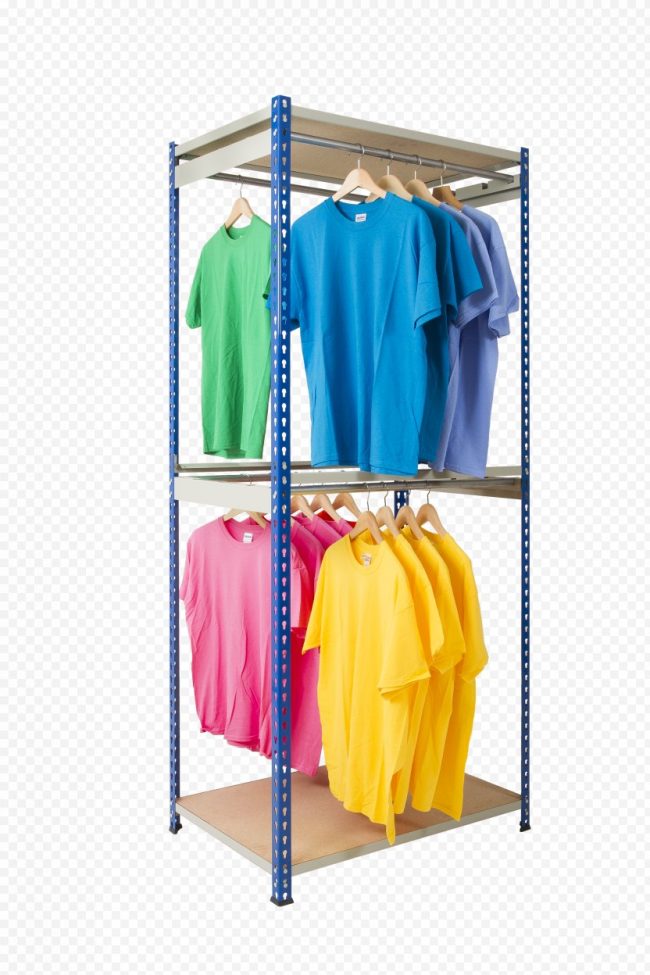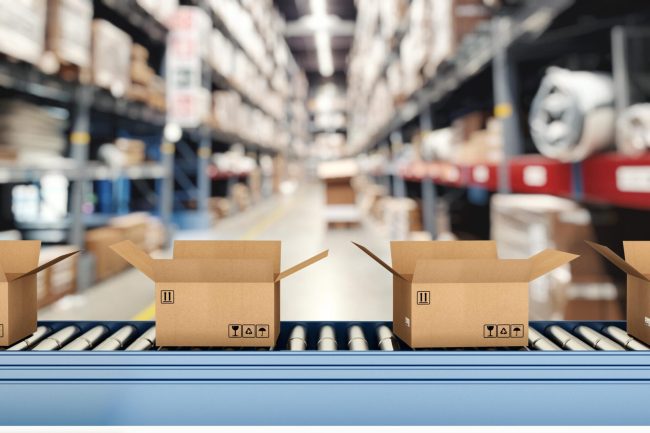
Automation enhances materials handling efficiency
Rising labour cost and safety compliance, and need to speed-up distribution processes, textile companies are opting for automation in material handling activity.
Materials handling covers movement and storage of everything in and around an establishment. In today’s highly competitive market, material handling has become a specialised activity for textile product manufacturing units as they aim to shorten logistics cost and time, and reduce inventory (of both input/raw materials and finished goods) to optimum.
“In the textile industry, as there are many processes involved in the conversion of raw material to the final product, there is a strong need for material handling. Many Indian textile manufacturers are increasing their volume of production, which calls for proper storage and material handling system for both raw material as well as finished goods,” said Anil Lingayat, Executive Vice President and Business Head, Godrej Material Handling, in an earlier interaction with ITJ. Godrej Material Handling is supporting the textile industry by improving working conditions and efficiency, increasing space utilisation, and reducing costs across the textile value chain.
Uniqueness of textile industry
In the textile industry, most problems stem from poor work environment and long repetitive tasks, often leading to the workers having stooped postures and pulled muscles, due to extreme manual heavy lifting. “These factors have an adverse impact on the health of the workers, which further leads to a loss of productivity on the factory and warehousing floors. Therefore, efficient material handling processes are necessary to cut down on labour fatigue and enhance productivity across various departments in the textile industry,” observed Anil Lingayat.

Textile industry involves independent process such as spinning, weaving, knitting, stitching, etc. At each stage of the cycle, the operators are exposed to various material handling challenges. “One obvious challenge is the weight and bulkiness of the material, for example, bales. When handling rolls of cloth, operators need to bend, stoop, and lift the rolls in awkward postures leading to physical pain. Additionally, most of the tasks are highly repetitive, thus, adding no real value to the product but taking up a lot of the time,” stated Rohit Dashrathi, Founder of Rucha Yantra LLP.
According to him, an operator in a textile industry spends 80% of his time transporting material from one point to another or performing any other similar non-value adding activity. Thus, the scope of improving efficiency in the textile industry is huge, said Dashrathi, whose company Rucha Yantra offers auto guided vehicles (AGVs) for automating the flow of material between different workstations, thus, reducing the requirement for workers as well as freeing up their time for adding real value.
Proper materials handling offers opportunity for improving productivity, reducing materials wastage, minimising industrial accidents, reducing man-power, etc. Thus, material handling is very important and critical in textile manufacturing processes. Lingayat said, “The material needs to be transported from one machine to the other for the next process. The batch size is very heavy, which calls for a perfect handling system to avoid any kind of damage during the time of transport.”
Visible changes in material handling
The shortage of labour and increasing wage cost demand the most efficient use of labour. Covid 19 pandemic further compounded the situation as the workers had to travel back to their home town during the first lockdown. Though the situation is returning to normalcy, finding a skilled labour is still a challenge. At the same time, online purchases have witnessed manifold increase (due to pandemic) resulting in requirement for efficient warehouses that use modern material handling equipment. “The growth in e-commerce in the past year due to the unprecedented rise in the number of online shoppers has led to textile manufacturers observing changes not only in terms of price but also flexibility, turnaround time, quality, quick response, etc. This has further called for a shift in the existing material handling equipment to more automated equipment, which are not heavily dependent on manual operations, and at the same time are both cost and time effective in nature as well,” stated Anil Lingayat.
With sales of textiles picking up again, the demand for modern material handling equipment is gaining traction in the textiles. Anil Lingayat added, “The COVID-19 pandemic amplified the demand for fully automated material handling solutions across most manufacturing sectors. The textile industry, being in high demand as part of an ever-increasing production sector, was required to upgrade its material handling systems and processes to improve customer service, reduce inventory, shorten delivery time, and lower overall handling costs in manufacturing, distribution, and transportation.”
Electric MHE in demand
Growth in warehouses is also driving demand for electric material handling equipment. “Industries governed by strict norms such as food & beverage and pharma, were already using electric equipment. However, we have recently seen the increase in demand in industries such as textile for their internal as well as inter-plant movement; this demand has been particularly noticeable for our all-weather electric forklift truck,” said Anil Lingayat.

There is no doubt that there is a perceptible shift towards products with cleaner, greener, and smarter technology in the warehouse equipment segment. However, there have also been concerns in the area of electric battery powered equipment to respond to user needs like enabling the forklift to run longer hours on a single battery charge, or enabling users to charge batteries at a convenient time rather than when the battery needs to be charged. “Godrej Material Handling has been able to address these concerns with the introduction of higher capacity batteries which can run for 2-shift operations on a single charge. We are also working on alternate battery technologies to shift to a cleaner and greener future,” opined Anil Lingayat.
Demanding material handling requirements and need to reduce carbon footprint are forcing textile producers to use electric material handling equipment. Many companies are opting for collaboration to fulfil the market requirement. For example, in February 2020, Rabatex Industries – one of India’s most prominent textile machinery manufacturers – formed a joint venture with Alexander and Giovanelli (A&G) Group, Italy for electric operated material handling equipment. “Rabatex Industries has now strengthened their manufacturing capacities with full technical support and know-how from A&G Group to produce the state-of-the-art weaving transportation trolleys in India. The group will continue to sell trolleys in the European market and Rabatex will take care of sales in the rest of world including India. Rabatex Industries has made its mark in developing and producing equipment with quality materials. With the industry moving towards automated technologies, Rabatex foresees a good demand for the electric operated trolleys. Tie with A&G will help us increase capacities to fulfil this demand,” said Paresh Shah, Business Head, Rabatex Industries Pvt Ltd, in an interaction with ITJ.
Equipped with several safety features, these electrical trolleys minimise accident chances. The demand for these trolleys is set to increase as they have low operational cost, are easy to operate, enhance productivity and reduce downtime.
Automation is the future
Concerns around labour availability, rising costs and need for safety are driving textile manufacturers to look for incorporating automation in various processes including material handling. Anil Lingayat said, “The textile industry has seen an encouraging trend over the last few years. With regards to material handling, there is tremendous scope in providing automated equipment, which would help in a faster logistical requirement. We, at Godrej Material Handling, will continue to introduce new products and services in the market and invest in developing new technologies to facilitate our customers to increase their productivity and safety at their workplace. We are also building a state-of-the-art manufacturing facility which will be operational next year.”
Rising e-commerce market are making warehouses and the entire distribution network to depend on automation for efficient functioning. Rohit Dashrathi said, “Competition in the textiles industry has never been greater – not only in terms of price, but also flexibility, turnaround time, quality etc. Given the onslaught of e-commerce, delivering products on time and ensuring the highest quality have gained paramount importance. Moreover, like in other industries, the issue of worker safety has gained a lot of traction and thus, companies are bound to ensure worker safety through the use of systems and technology. Material handling, due to these developments, is changing drastically. Automation is leading to a decrease in the number of workers required, freeing up their time to perform other value-adding activities, and reducing their exposure to risk.”
Irrespective of market condition the trend towards automation and digitalisation is here to stay in the material handling arena of textile industry. Rohit Dashrathi said, “Due to a variety of reasons, the textile industries are shifting towards modern technology including the material handling equipment and it will continue to grow as the demand for textile sector in itself is unending.”




